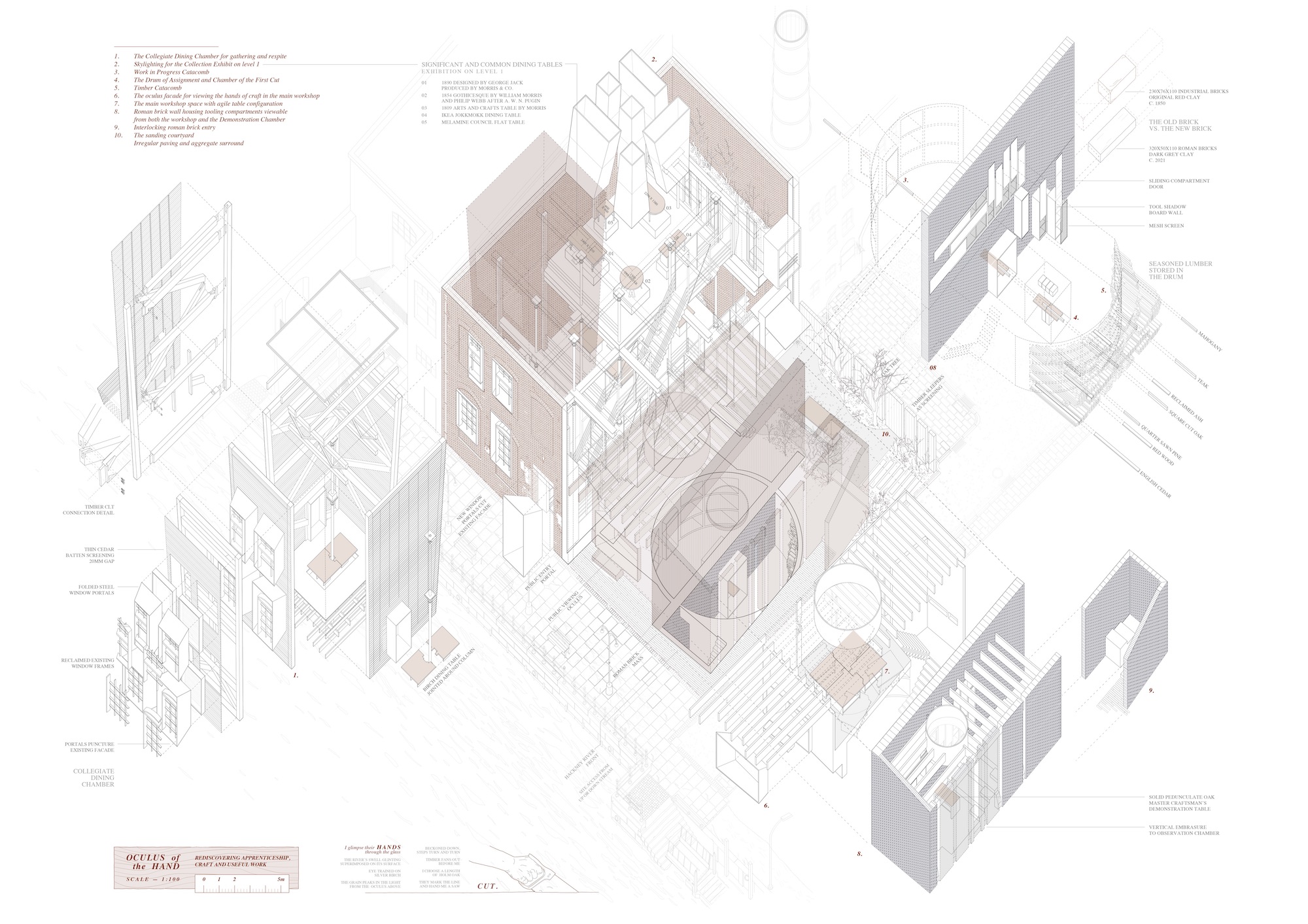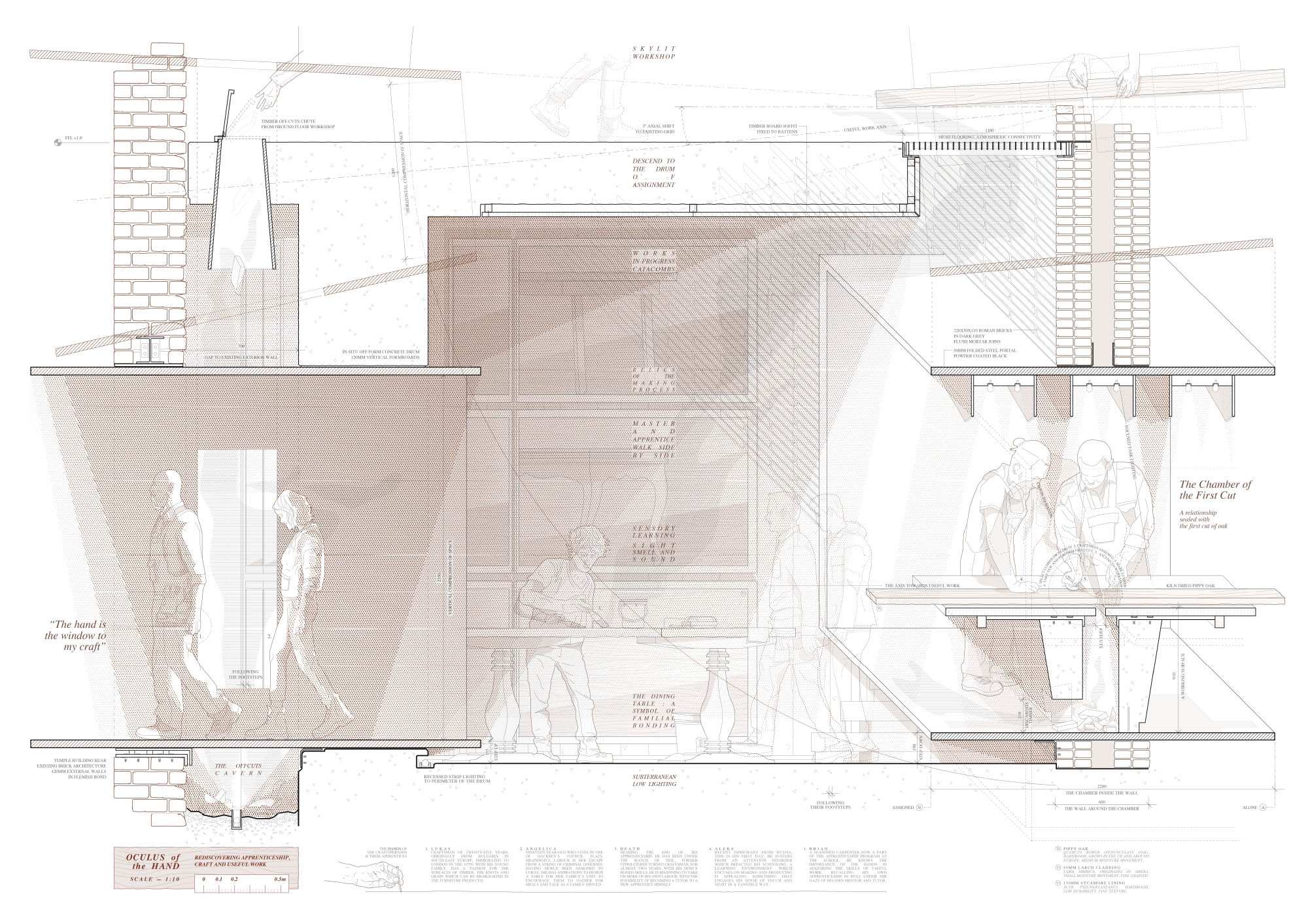Oculus of the Hand.
Rediscovering Apprenticeship, Craft and Useful Work
Blistered and calloused. I notice their hands first, fingers like pistons. The chiseled crevasses of their palm brush away sawdust. It hangs in the afternoon light. Oak thuds onto the bench. They see the table leg beneath its surface, I see only a block of wood… for now. One day my hands will read timber like theirs; distinguish Birch from Beech, recess from router, dovetail from dowel. In this school of craft — the oculus guides the eye and the portal focuses a progression; a move from observation to action, from new brick to old, from subterranean drum to skylit, timber lined collegiate dining, towards useful work and enjoyment in labour.
The scheme was heavily directed by research into writings around the industrialisation in nineteenth century — particularly William Morris who spoke of the “hope of pleasure in work ” and John Ruskin who saw the assembly line dividing men into the “crumbs of life”. A critique of the loss of craftsmanship, the scheme reacts by encouraging meaningful work amongst the youth of Hackney, London in a School of Craft.
The main architectural ideas centred around ideas of — watching and viewing to acquire skills, and contrasting cutting and jointing. The portal and the oculus were architectural devices which allow for mediation of space, both horizontally and vertically. The portal horizontally mediates physical movement, and vertically compresses, tightening then releasing. The oculus mediates views by framing spaces horizontally and channels light vertically. These devices were to position the eye and hand in a relationship — level changes to workshop spaces allow a direct sight line between the eye and hand, and learning through observing.
The scheme engages in a sensory learning and process of attainment of skilled labour — the sight of timber joins and hands at work, the scent of cut lumber, the smell of dining. The apprentice is engaged and, as Morris would hope, fulfilled in their pursuit of useful work.
Semester 1 2021
The University of Melbourne
Studio 2
Oskar Kazmanli-Liffen and Rennie Liffen
School of Craft
Hackney, London


